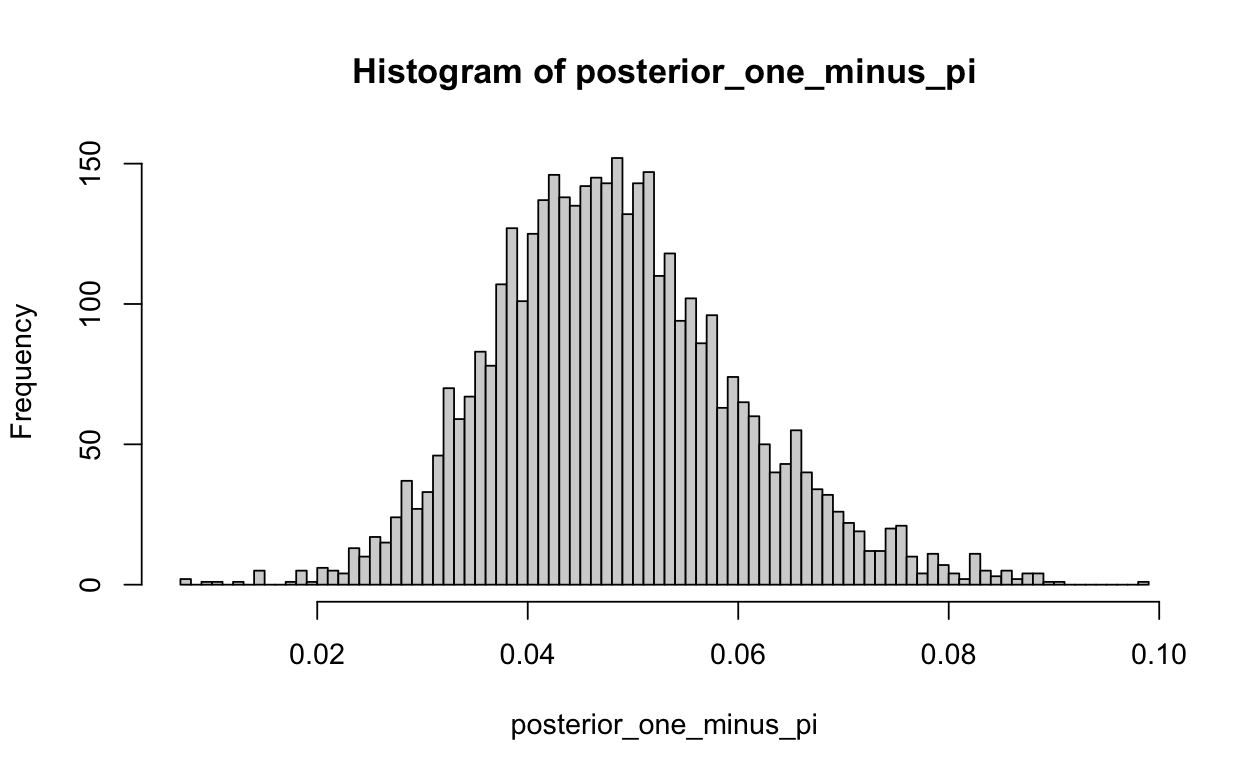The natural way to model this is as a mixture of two Normal distributions.
Proportion $\pi$ of the data comes from distribution 1, which has a mean of 100, a standard deviation of 15. Proportion $1 - \pi$ comes from distribution 2, which has a mean of 120, and an unknown standard deviation (unless you're able to provide one). You're primarily interested in estimating $1 - \pi$.
There are lots of tools for estimating Gaussian mixture models, but most won't quantify uncertainty in the proportions, as far as I know. I would therefore reach for Bayesian tools like Stan here. Here's a very rough implementation of this idea, based on an example from the rstan documentation. If anyone wants to edit this answer to provide more explanation, please feel free.
library(rstan)
# Simulate data
n = 1000
n_k = 50
data = c(
rnorm(1000 - n_k, 100, 15),
rnorm(n_k, 120, 2)
)
hist(data, breaks=101)

Stan model
data {
int N;
vector[N] y;
}
parameters {
ordered[2] mu;
vector<lower = 0>[2] sigma;
// Here, Theta[1] = pi, Theta[2] = 1-pi
simplex[2] Theta;
}
model {
vector[2] contributions;
// priors
mu[1] ~ normal(100, .1);
sigma[1] ~ normal(15, .1);
mu[2] ~ normal(120, .1);
sigma[2] ~ cauchy(0, 1);
Theta ~ dirichlet(rep_vector(2.0, 2));
// likelihood
for(i in 1:N) {
for(k in 1:2) {
contributions[k] = log(Theta[k]) + normal_lpdf(y[i] | mu[k], sigma[k]);
}
target += log_sum_exp(contributions);
}
}
stan_data = list(
N = length(data),
y = data
)
stan_result = rstan::sampling(mm_stan_model, data=stan_data, iter=2000)
stan_result
# Inference for Stan model: stan-c893ebbe0d5.
# 4 chains, each with iter=2000; warmup=1000; thin=1;
# post-warmup draws per chain=1000, total post-warmup draws=4000.
#
# mean se_mean sd 2.5% 25% 50% 75% 97.5% n_eff Rhat
# mu[1] 100.00 0.00 0.10 99.80 99.94 100.00 100.07 100.20 3301 1.00
# mu[2] 120.01 0.00 0.10 119.81 119.94 120.01 120.08 120.21 3289 1.00
# sigma[1] 15.01 0.00 0.10 14.82 14.95 15.01 15.08 15.20 4030 1.00
# sigma[2] 1.97 0.03 0.75 1.15 1.56 1.82 2.14 4.03 457 1.00
# Theta[1] 0.95 0.00 0.01 0.93 0.94 0.95 0.96 0.97 910 1.00
# Theta[2] 0.05 0.00 0.01 0.03 0.04 0.05 0.06 0.07 910 1.00
# lp__ -4145.98 0.06 1.71 -4150.22 -4146.90 -4145.62 -4144.69 -4143.77 795 1.01
#
# Samples were drawn using NUTS(diag_e) at Mon Apr 22 13:49:35 2024.
# For each parameter, n_eff is a crude measure of effective sample size,
# and Rhat is the potential scale reduction factor on split chains (at
# convergence, Rhat=1).
posterior_samples = extract(stan_result)
posterior_one_minus_pi = posterior_samples$`Theta`[,2]
hist(posterior_one_minus_pi, breaks=101) # Proportion of values that are outliers

Update
There's actually a simpler approach here, if you are willing to assume the means and standard deviations of the two distributions, but I don't have time to go into it.




